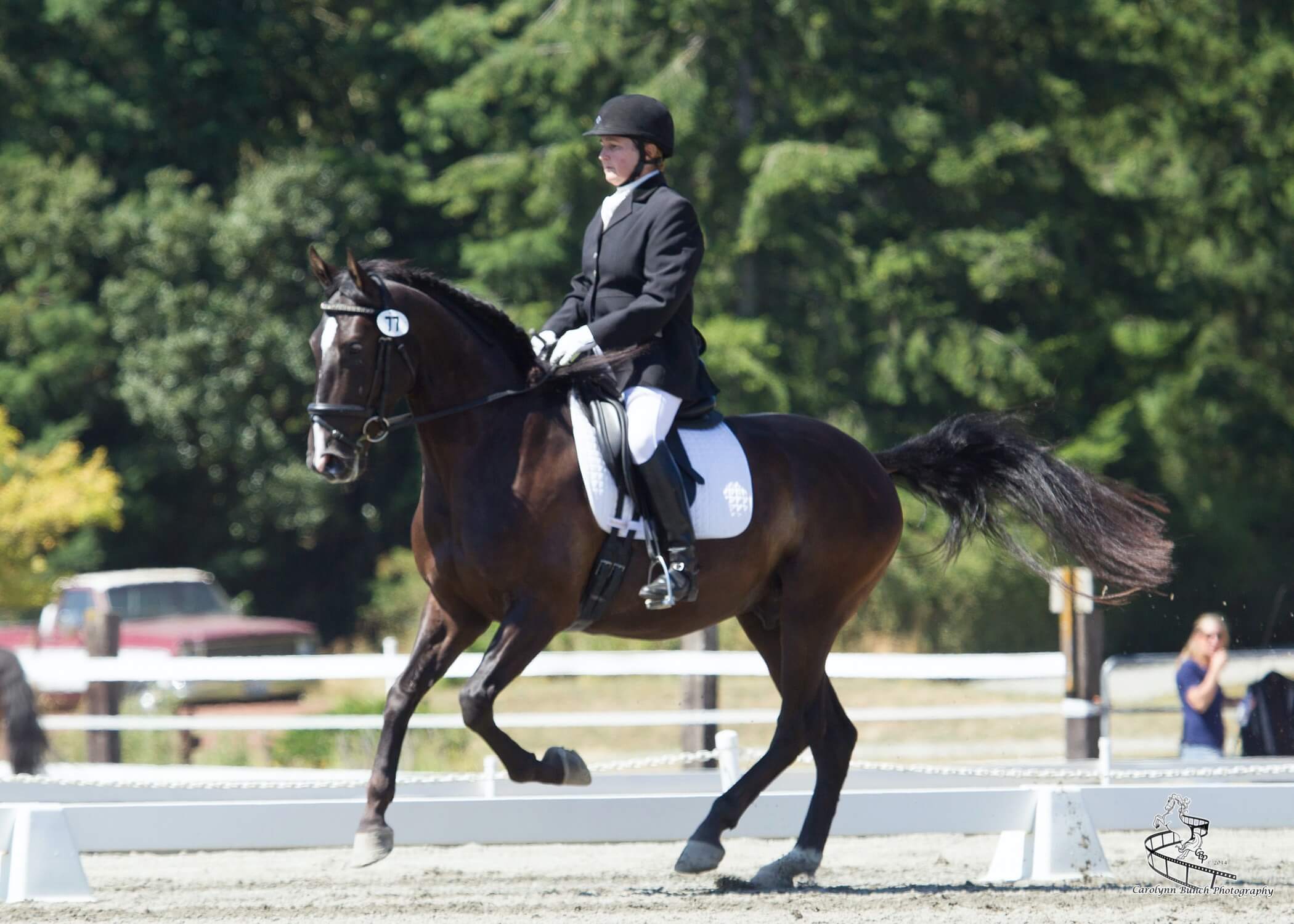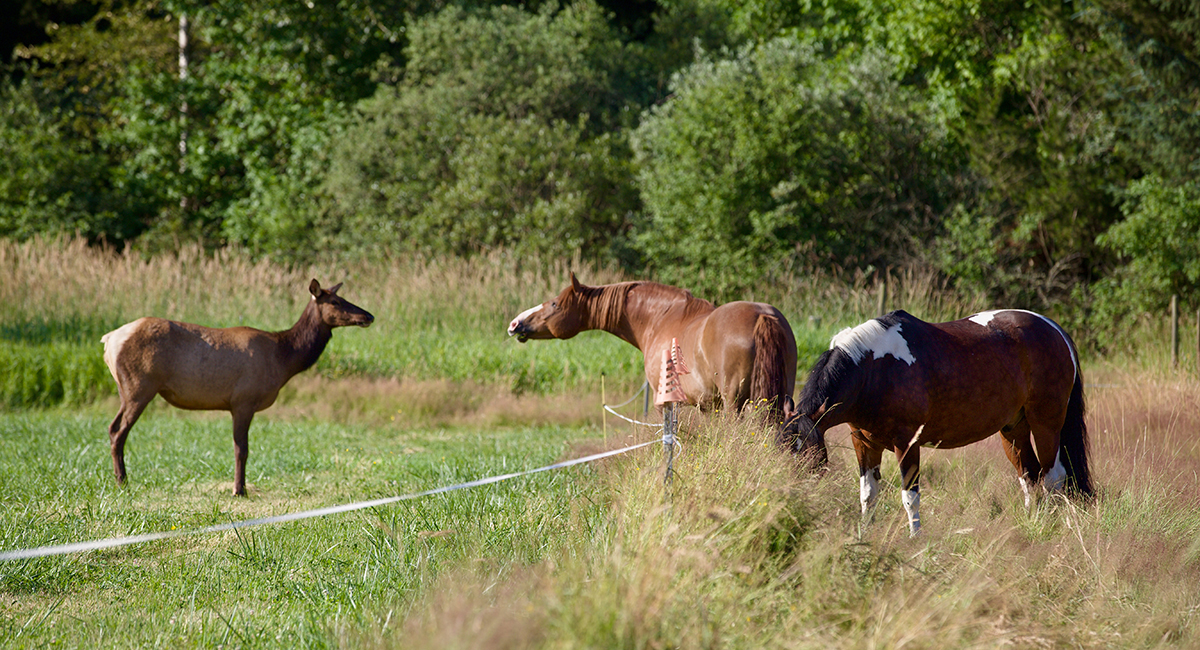Portable, Short-Term Fences Help Manage Equine Properties
It’s important to begin a discussion about temporary fencing by saying that this type of fence should only be used inside the perimeters of solid, safe, permanent fencing.
Temporary fencing is a good way to divide pastures quickly and easily. It’s a way to keep bullies from more timid horses, keep the overweight ones off lush pastures, rehab an injured horse in a smaller space, keep horses away from newly seeded sections, manage overgrazed or wet areas, and protect sensitive trees or shrubs. It’s also a great way to graze your fields rotationally, moving the temporary fences as horses graze down an area.
Temporary fencing should never be used to keep horses off roads or out of neighbors’ property. Remember—good fences make good neighbors. Invest in top-quality perimeter fencing to keep your horses safe and your neighbors happy.
What is temporary fencing?
Temporary fencing includes any quickly erected, easy-to-build fencing that incorporates electric fence wire or poly tape, poly wire, or braided rope. The posts can be of the type that self-insulate such as step-in fiberglass or plastic posts, or wood/plastic blend posts. I prefer small wood posts with a sharp point at one end that I can hammer or pound in as they are more likely to break than impale a horse, though these do need insulators installed. I also prefer the half-inch white poly tape as it’s easy for horses to see and easy for me to work with and fix. I have seen severe injuries from horses who got entangled in the rope fencing.

I don’t use steel t-posts as I’ve seen too many horses seriously injured by these types of posts. I also know of horses (and one human friend) who was impaled by one of the fiberglass fence posts when a bolting horse carried the fence and a post right into her. This leads me to my next point…
Train horses to respect electric fence.
Horses only stay in fencing because they don’t know their own power. It’s important we train horses from an early age that fences “sting” and if we are going to use temporary fence, we need to introduce it with caution to our horses. Many older horses have a deep respect for a fence and will never test one, but others will blow through a fence if they’ve learned the reward of good grass on the other side is worth the momentary pain.
Not all horses can be kept in temporary fencing. Know your horse and think about their experience with fences. Do not put new horses out in temporary fencing until you know that they respect this type of fence. Keep your electric fences hot and your horses will learn to respect them. This is for their safety as well as the safety of everyone on your farm.
Using electric fencing to beef up your permanent fences will help teach horses to respect the barriers. Use poly tape (at least for a while) on your permanent fences to train your horse to the idea that white tape stings. Be aware that blankets and thick hair coats can insulate a horse to the electric shock, and very dry conditions or power outages make electric fences not work, so this training step is very important.
Building tips include the use of sturdy wood posts at either end of your fence line.
Design your temporary fences so they are anchored by your permanent fence posts at either end. Fiberglass, plastic, and even metal fence posts are not strong enough to hold a long line of temporary fence. Anchor the ends of your temporary fence line with a large insulator screwed into the permanent fence post, stretch tight, and then put your temporary fence posts in at a regular and sensible distance that keeps the fence from sagging in wind or rain. I do design my temporary fences with a few strategic weak spots, so they’ll break in case my horses or roaming wildlife become entangled in the fence.
One final tip: check all your fences, but especially temporary ones, every day before turnout. Bad weather or wildlife can easily take down a temporary fence.
See this article in the April 2025 Online Digital Edition:
April 2025

Kim Roe grew up riding on the family ranch and competed in Western rail classes, trail horse, reining, working cow, and hunter/jumper. She trained her first horse for money at 12 years old, starting a pony for a neighbor.
Kim has been a professional dressage instructor in Washington state for over 30 years, training hundreds of horses and students through the levels. In recent years Kim has become involved in Working Equitation and is a small ‘r’ Working Equitation judge with WE United.
Kim is the editor of the Northwest Horse Source Magazine, and also a writer, photographer, and poet. She owns and manages Blue Gate Farm in Deming, Washington where she continues to be passionate about helping horses and riders in many disciplines.






